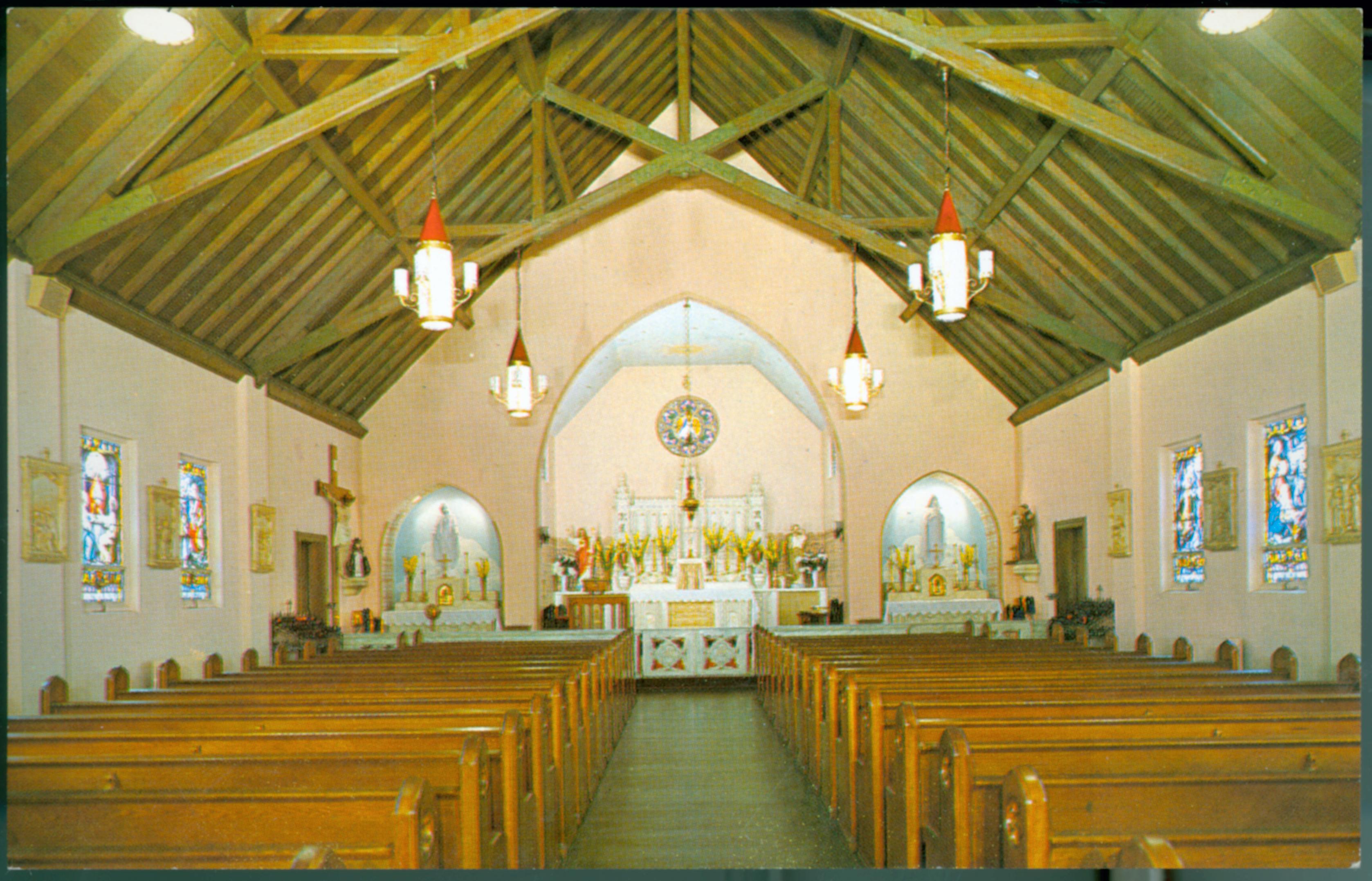 A few reference questions directed to the archives recently have centered around religious practice in Montauk before the construction of the two main church buildings in the village: the Montauk Community Church (Presbyterian), dedicated in 1929, and St. Therese of Lisieux Church (Roman Catholic), which held its first public mass on August 31, 1931. Both were constructed on land donated by entrepreneur Carl Fisher. Before these churches were built, though, where did people go to observe their respective religions?
A few reference questions directed to the archives recently have centered around religious practice in Montauk before the construction of the two main church buildings in the village: the Montauk Community Church (Presbyterian), dedicated in 1929, and St. Therese of Lisieux Church (Roman Catholic), which held its first public mass on August 31, 1931. Both were constructed on land donated by entrepreneur Carl Fisher. Before these churches were built, though, where did people go to observe their respective religions?
The Episcopalian faith predominated in Montauk in the early 1900s, perhaps because Miss Mary Benson, daughter of early Montauk landowner Arthur W. Benson, was such a strong supporter. Parishioners traveled to the tiny Hither Plain school for Sunday services. Then, in 1915, Miss Benson donated funds for the construction of the Silver Dolphin, located near the Depot in Fort Pond Bay Village where most parishioners lived. Attending services became much easier. The Silver Dolphin functioned like a community center as well as a church: it included a library (Montauk’s first! Later called a “reading room”), a social center, and a playground. Dances, fairs, Christmas parties and Easter egg-rolling contests took place there. After a number of years, the Silver Dolphin was moved up near the Tower office building and taken over by the Fire Department. Eventually, it burned down.
The large contingent of French-Canadians in Montauk no doubt increased the demand for a Roman Catholic Church. In addition, the Montauk Manor, which was up and running by the late 1920s, entertained guests who wished to attend mass. Beginning in the mid-1920s, Catholic mass was offered in the Montauk Theater Building, located on Main Street (where Naturally Good and White’s Liquor Store sit now). By Labor Day, 1931, Montauk Catholics had their own church.
This postcard interior was photographed in the 1950s or 60s. Today, in 2021, St. Therese, like other churches, practices pandemic-reducing social distancing: only 50 percent of its 500-person church-seating maximum can be filled with communicants desiring to attend mass. Not as empty as this photographed interior, but not filled to capacity, either.
In the Power of Myth, published in 1988, author Joseph Campbell emphasized the importance of ritual in our public and private lives. Special events like marriages and funerals, baptisms and confirmations, and graduations and inductions are rituals that satisfy our deep social need for acknowledging change and transition. Churches offer the venue and script for these rituals, a way to try and make sense out of life, death – and pandemics.

Reply or Comment